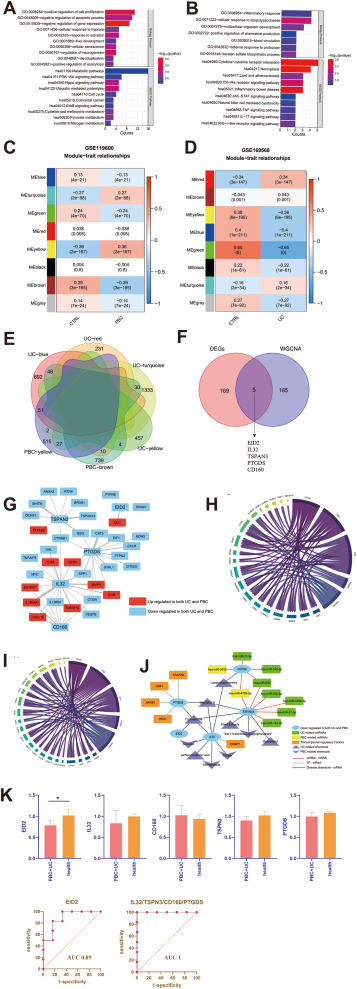
Identification of the underlying molecular mechanisms of primary biliary cholangitis and ulcerative colitis comorbidity


Patients with primary biliary cholangitis (PBC) may have a poor prognosis, with approximately 40% of them developing cirrhosis within 10 years of diagnosis. Recent studies suggest that some metabolites are causally associated with both PBC and ulcerative colitis (UC). UC may increase the risk of PBC in the European population, which may suggest the etiology of PBC.1 Meanwhile, poor prognosis in patients with PBC has been shown to be closely associated with UC in many case reports. Additionally, it is hypothesized that the increased levels of lipopolysaccharides and inflammation or immune response are related to the higher permeability of the small intestines in PBC. Moreover, UC is a chronic and progressive inflammatory disease that disrupts the intestinal epithelial barrier and damages the colonic mucosa. Research on the mechanism of comorbid PBC and UC has significant clinical importance for intervention and early recognition of the disease. In this study, we aimed to explore the co-expressed differentially expressed genes (DEGs) and hub genes of PBC and UC, as well as analyze the possible regulatory factors of these genes. This research is conducive to further studying the molecular mechanisms of PBC and UC.
